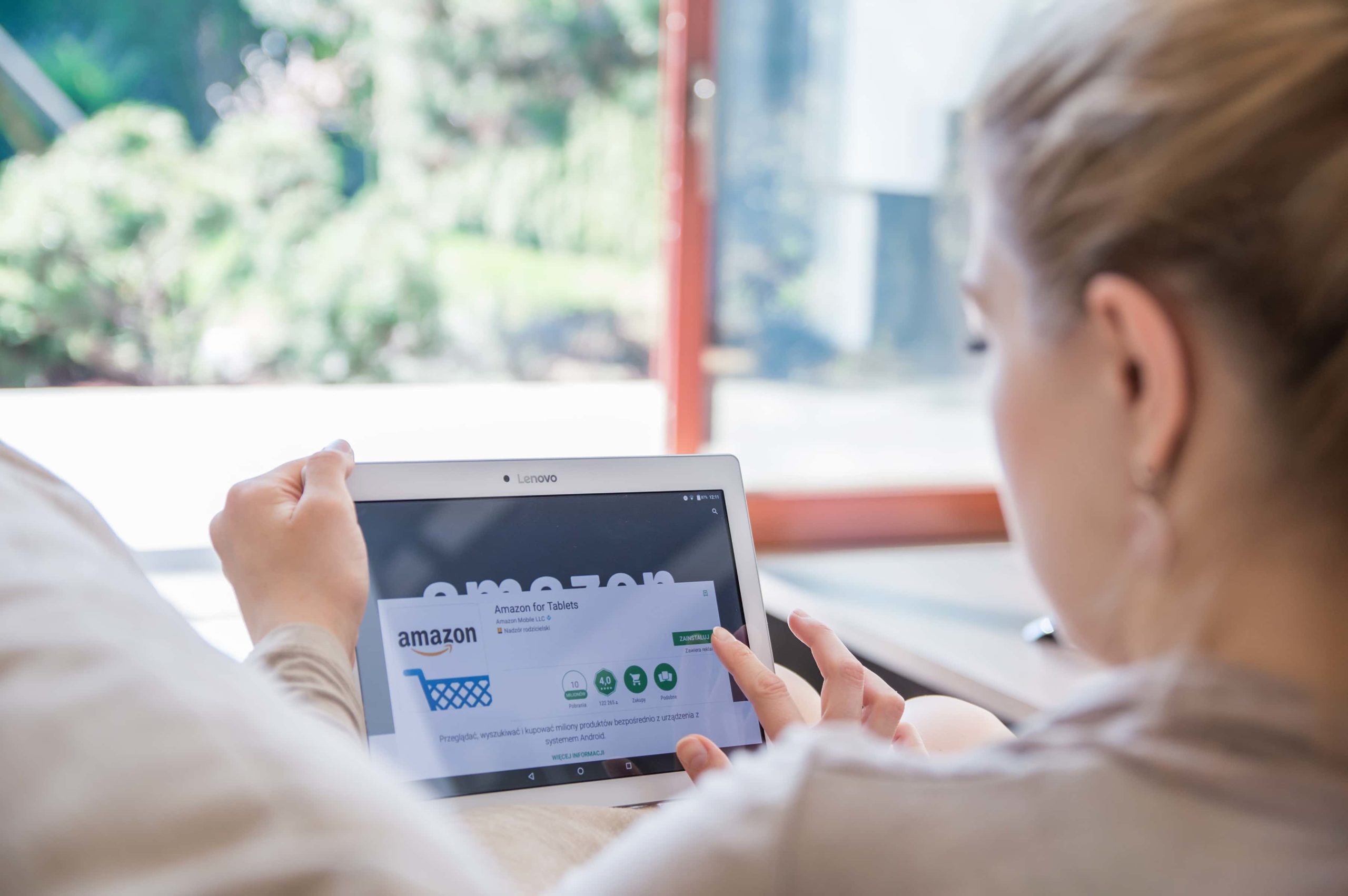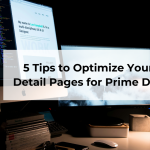We have been talking about the Buy Box for two weeks now: what it is, why it is important, where it appears on the detail page, etc. In today’s post we discuss the variables affecting the ownership of the buy box, interesting for Amazon sellers. This week we are going to talk about perhaps one of the most important aspects, which is, nothing more and nothing less, what are the variables that affect the Amazon algorithm to assign to a specific seller the appreciated button.
Variables affecting the achievement of the Buy Box
Before starting to detail these variables, we must remember a very relevant aspect. All the variables that we are going to analyze are measured in terms of the competitors’ supply of the products in the category and subcategory. For example, a product in one category may have very strong and very good competition, and therefore it is more difficult to get the Buy Box, but in another subcategory, we are more powerful than the previous seller and therefore the Buy Box is ours.
Having said that, let’s list the 10 variables that affect the most incipiently:
1.- Shipping method: FBA (Fulfillment By Amazon)
This is the most important variable that Amazon takes into account, which is why we start talking about it first. Amazon trusts itself and knows that if it sends the products, the risk of late delivery, stock problems, and many others are controlled and practically do not exist.
This aspect influences those who offer a product in FBM format (Fulfillment By Merchant) because if the same product is offered in FBA format or by Amazon itself, the seller’s ratios must be practically perfect to qualify for the prized Buy Box. Therefore, using the FBA format as a shipping method is a quick way to increase the chances of winning the Buy Box.
2.- Final price of the product
Here sellers have an advantage over vendors since they can set the final price of the product while in the case of the vendor it will be Amazon who decides the final price at which they want to sell the product. It is clear that the price is one of the most relevant variables and that, in theory, it is the seller who has the upper hand in terms of controlling this variable. But the vendor also has weapons to control, in a certain way, the final price of the product. In Amazing we are very clear about the actions and activations that must be carried out to have this aspect under control.
3.- Product delivery time to the final consumer
Another key aspect within the Amazon metrics that determine the possession of the Buy Box is the time in which the Seller indicates how long it will take to ship the product to the final consumer. The seller that offers faster shipments has a greater chance of obtaining the Buy Box. This metric is key for sellers and something that sellers don’t have to worry about since Amazon takes care of the shipping of the merchandise.
However, there are caveats to take into account depending on the type of product you are offering and selling on Amazon. In the case of Sellers, you have to be very careful if you are selling customized products for example because failing in delivery times in these cases is very relevant (if you deliver late and the customer no longer needs it, you also have a guaranteed return). And in the case of Vendors that have the “Drop Shipping” delivery method (using Amazon’s logistics but storing in their warehouse and not in Amazon’s) for very bulky or very technical products (for example professional bicycles or mattresses), you must also comply strictly with the requirements that Amazon demands so that they (who are finally the ones who deliver the product) do not have complaints of delays.
4.- Stock availability
The product must be in stock if you want to qualify for the Buy Box. If your product wins the Buy Box but is out of stock that day, the Buy Box will rotate and will be assigned to another seller from the list of bidders. Therefore, in the case of being a Seller, it is key to review this concept daily and if you are delivering the product to Amazon’s warehouses because you are in FBA Seller mode, calculate very well when you have to send a new shipment so as not to run out of stock.
But there are exceptions to this rule. Nowadays, almost all products can be uploaded on the platform as “back-ordered” with a disclaimer that is visible on the detail page. This functionality allows you to accept orders for the product even if it is not available; even if the product is delivered later, but the customer knows at all times that he will have to wait until the date detailed on the detail page. Amazon recommends a maximum of 30 days (Amazing recommends less). These recommendations also apply to those products called “pre-ordered products” that allow consumers to reserve products in advance of the release dates of those products (such as Disney DVD movies or the new PlayStation).
In the case of the Vendor format, the stock issue does not depend on the vendor but on the requests that A9 makes every week. In this case, you have to make sure that the algorithm does not stop asking you for those key products and that you meet the delivery deadlines set by Amazon. And if it does not ask you, activate the fundamental levers so that it requests you (from retail aspects to content and advertising).
Even so, stock control is key because if you manage it correctly and in a controlled way, obtaining the Buy Box is much more likely.
5.- ODR control
What is the ODR? The definition is Order Defect Rate and is a combination of three metrics:
- The Supplier Negative Rating
- The Warranty Claim Rating (A-to-Z).
- The Credit Card Return Rate
The higher the ODR rate, the less likely the vendor is to win the Buy Box. While this score only has a relatively medium impact on the algorithm that defines Buy Box ownership, sellers with more than 1% ODR can face significant penalties, including account deactivation. Ideally, this figure should always be kept below 1% to have a serious chance of winning the Buy Box.
6.-Valid Tracking Rate
This concept measures the percentage of packages shipped with a valid tracking number divided by the total number of packages shipped and confirmed.
Sellers are now required to provide valid tracking numbers for at least 95% of orders in all categories in which you are selling your products. Failure to do so will not only have a detrimental effect on the Buy Box quota but could also lead to sellers losing the ability to sell in the category.
7.- Shipment Delay Rate
The late shipment rate is the number of orders shipped later than the committed date.
committed. The expected ship date is calculated based on the handling time that the seller sets in Seller Central (in the Manage your inventory section). If you do not set a handling time, the default value is one to two business days by default.
Therefore, it is recommended to ship and confirm the shipment before the expected
shipping date. Ideally, this number should be kept below 4% to have a positive impact on your bottom line.
to have a positive impact on the chances of winning the Buy Box.
A rate above 4% could result in account deactivation. This metric only affects FBM sellers (who ship themselves and not Amazon).
8.- On-Time Delivery
Contrary to the previous case, this metric refers to the percentage of orders that buyers received before the estimated delivery date. A score below 97% will have a strong negative effect on the Buy Box.
9.- Seller Ratings Rating
When rating on Amazon, you can rate both the product and the seller. Many users indeed confuse both aspects so the truth is that it is a risk as this rating weights terms of the decision to award the Buy Box. The comments/ratings that a seller receives are grouped by the last 30 days, 90 days, 12 months, and since they started selling on Amazon. It is the most recent comments that most influence the Buy Box decision.
10.- Buyer/User Response Time
Although it was initially thought to have little effect on the Buy Box award, we now know that customer response time plays an important role. Amazon measures the response time it takes for a seller to respond to buyer messages. If a seller leaves too many messages unanswered for 24 hours or more, the chances of that seller earning the Buy Box will decrease significantly in addition to lowering their overall seller ratio as well.
The fact that all these variables affect the decision to have the Buy Box in such an incipient way requires sellers to have very detailed control of the account. It cannot be left to a free will since, in addition, the fact of not having the Buy Box affects the rest of the levers that must be activated to achieve objectives.
At Amazing we know how important it is to have a clear strategy and achievable objectives, with the ideal budgets to achieve them depending on the type of seller our clients have chosen: vendor (1P) or seller (3P). For any questions, we invite you to contact us at hola@amazingagency.io where we will get in touch to discuss how we can help you.
Somos una agencia especializada en ayudar a los vendedores en Amazon en la gestión de marketing y publicidad.




